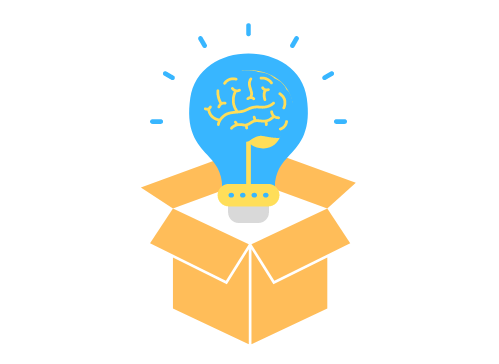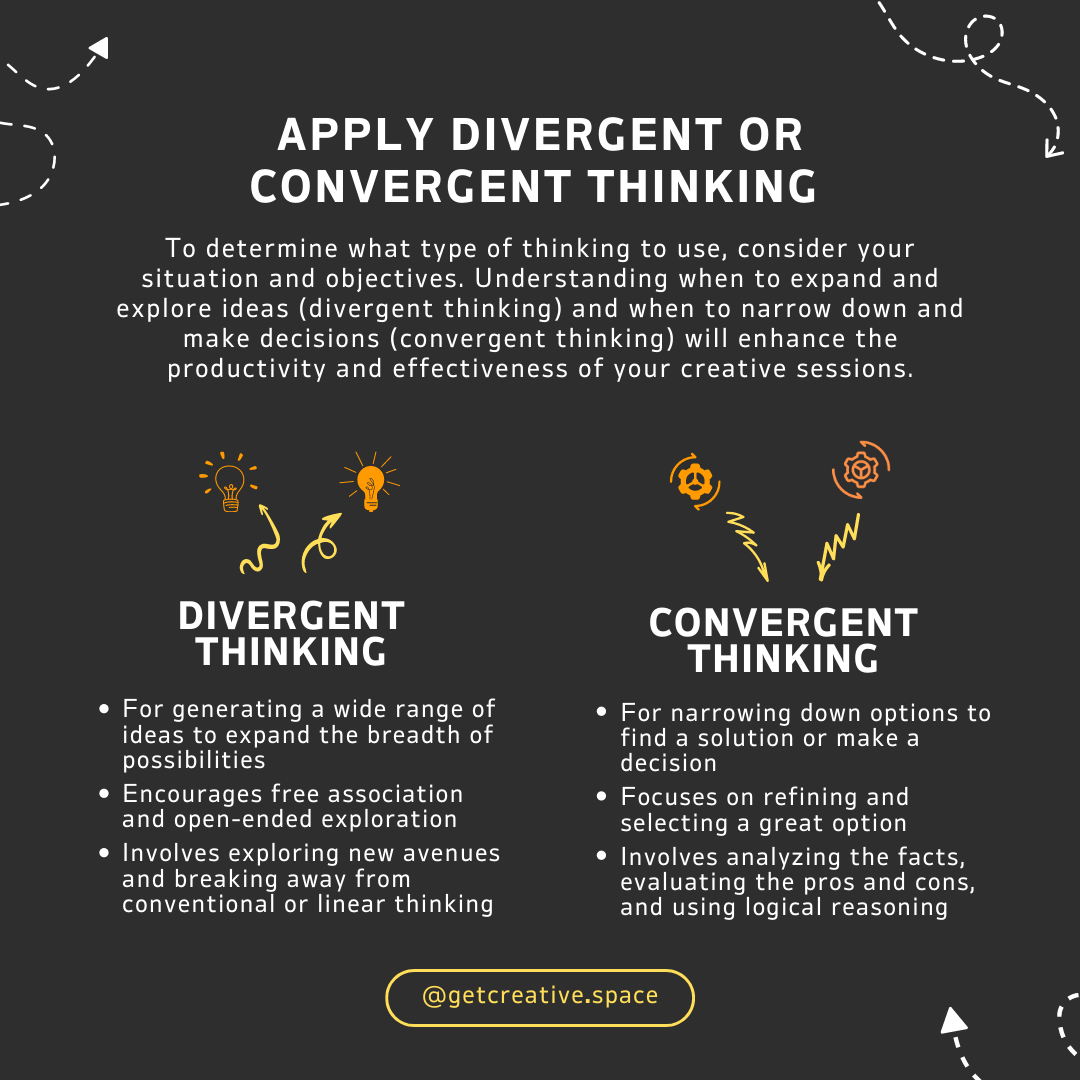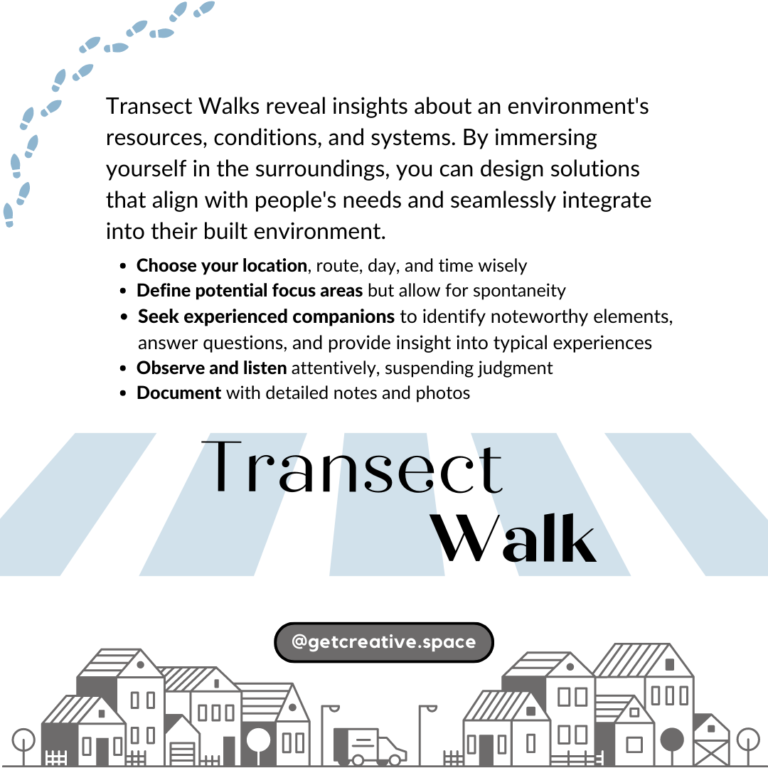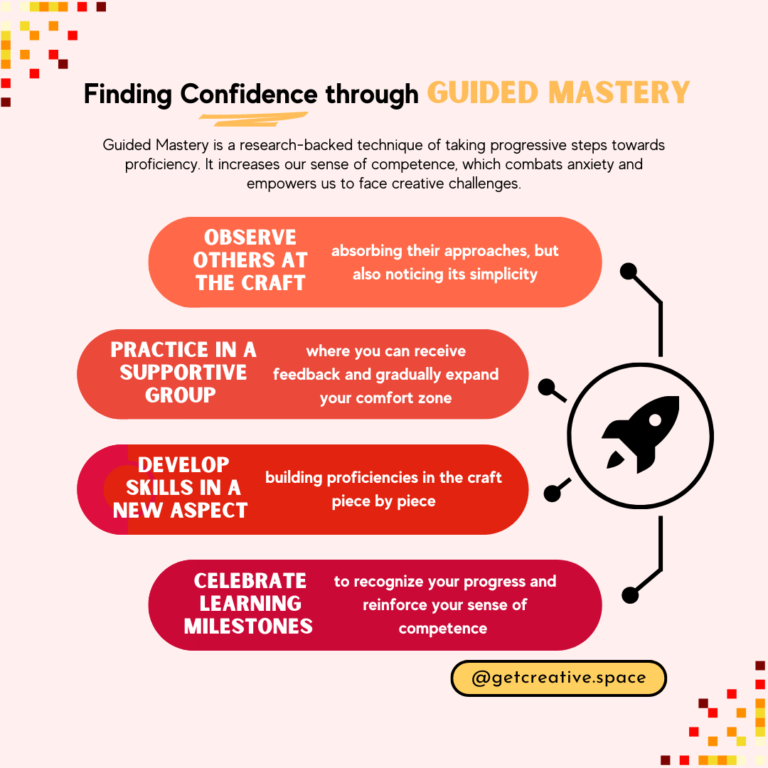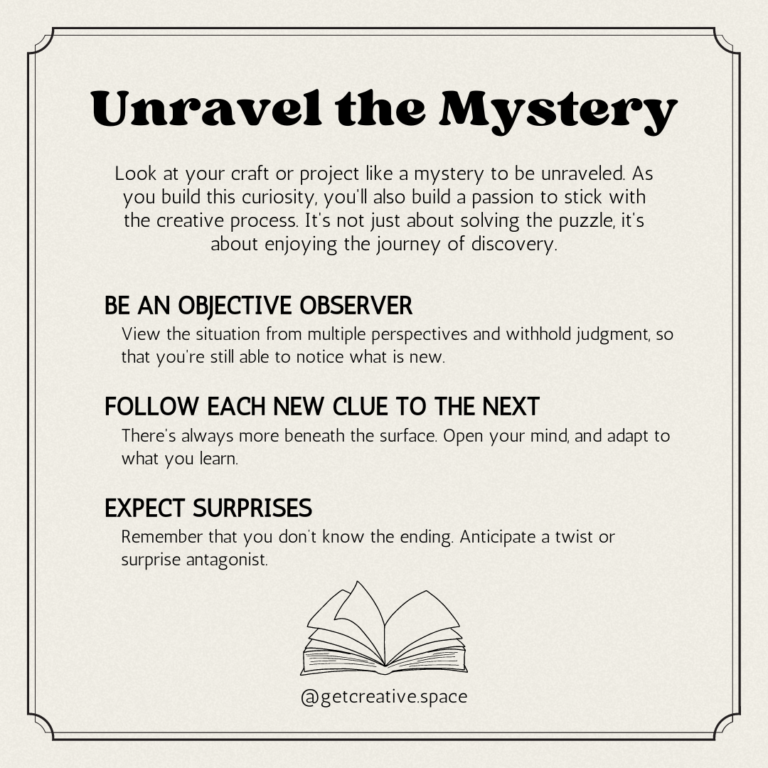Apply divergent or convergent thinking
With both divergent and convergent thinking, we can form innovative new connections between ideas. Although divergent thinking is more commonly associated with creativity, convergent thinking is also useful for developing creative solutions. To determine whether the situation calls for divergent or convergent thinking, assess the current stage of the creative process and the specific objectives you are aiming to achieve. Let’s explore both scenarios:
- Divergent Thinking:
Divergent thinking is typically employed during the initial stages of the creative process when you are looking to generate a wide range of ideas and explore various possibilities. This type of thinking encourages brainstorming, free association, and open-ended exploration of different avenues. It involves breaking away from conventional or linear thinking patterns and allowing minds to wander freely. Divergent thinking is valuable for idea generation and expanding the breadth of possibilities, enabling you to explore novel connections between concepts. - Convergent Thinking:
Convergent thinking, on the other hand, comes into play when you have a wealth of information or ideas and need to narrow down the options to find a specific solution or make a decision. This type of thinking involves analyzing the facts, evaluating the pros and cons, and using logical reasoning to identify the most viable or appropriate course of action. Convergent thinking helps you focus your attention and effort on refining and selecting the best ideas or solutions from a pool of options.
It’s important to note that both types of thinking are interconnected and can be employed at different stages of the creative process. While divergent thinking allows for the exploration of new and unconventional ideas, convergent thinking helps you evaluate and refine those ideas to design suitable and effective solutions.
Ultimately, the choice between divergent and convergent thinking depends on the specific needs of the creative session and the stage of the process you find yourself in. Understanding when to expand and explore ideas (divergent thinking) and when to narrow down and make decisions (convergent thinking) can enhance the productivity and effectiveness of your creative sessions.
